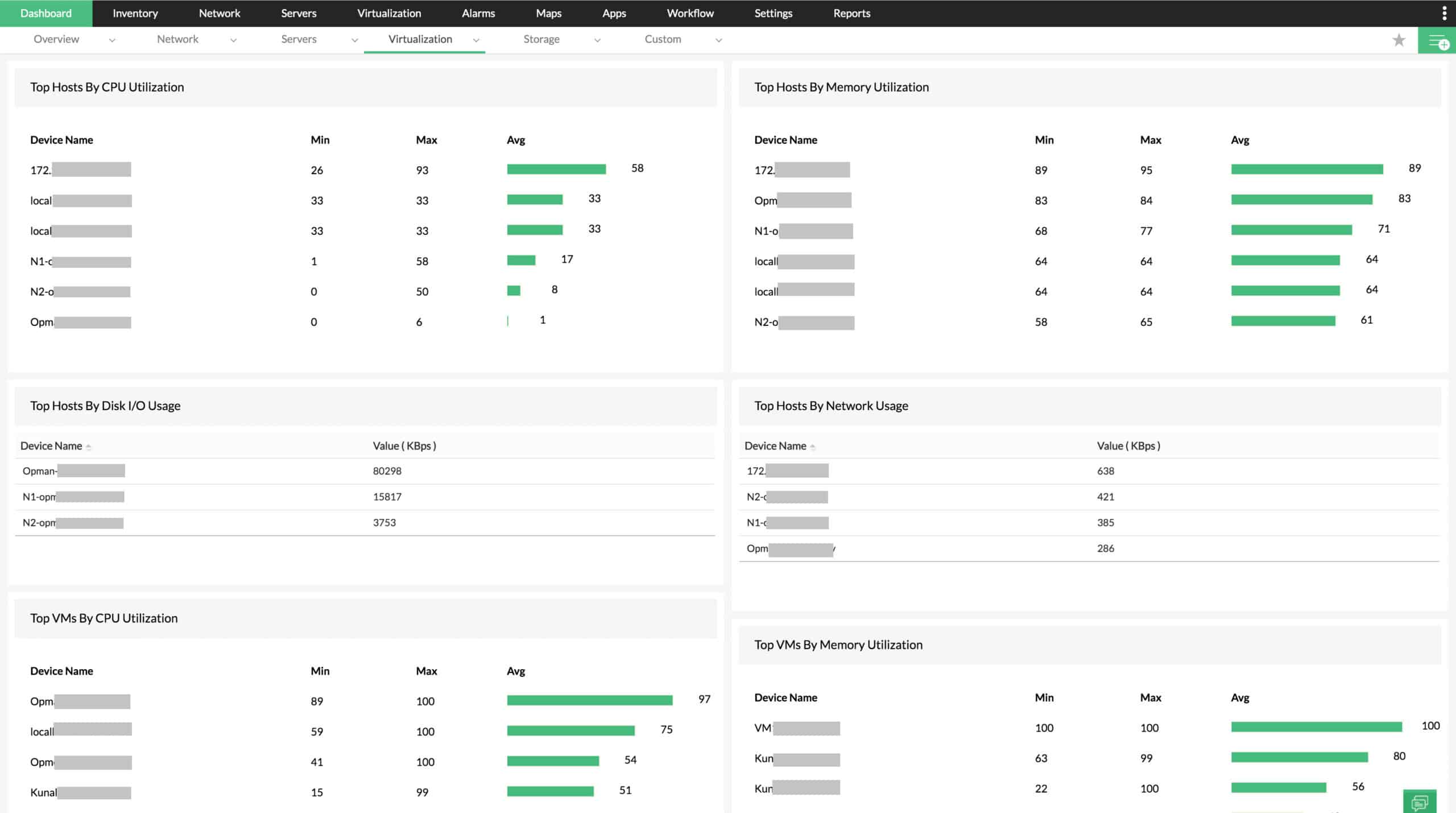We may earn a commission if you make a purchase through the links on our website.
The Best Network Function Virtualization (NFV) Tools
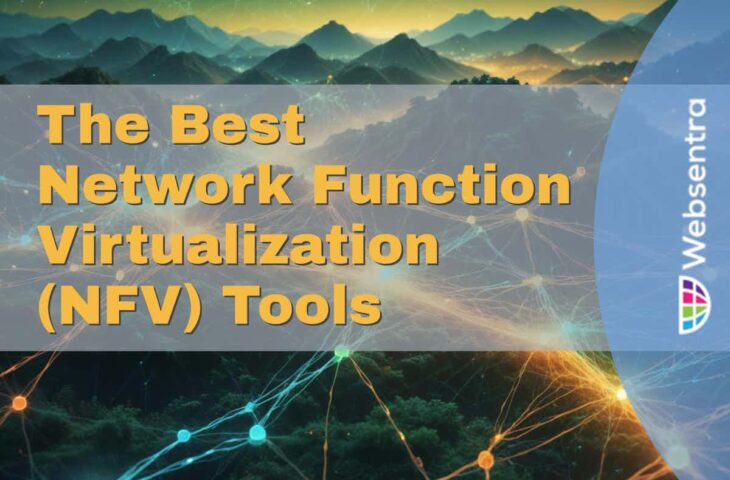
UPDATED: September 1, 2025
Network Function Virtualization (NFV) has evolved as a game-changing networking technology, allowing enterprises to virtualize and consolidate network services onto a shared infrastructure. NFV offers flexibility, scalability, and cost savings by detaching network services from specific hardware appliances. However, with so many NFV solutions on the market, it is critical to thoroughly assess the main elements when deciding on the best solution for your organization's needs.
Here is our list of the best Network Function Virtualization (NFV) Tools:
- ManageEngine OpManager – EDITOR’S CHOICE An advanced virtual machine monitoring tool that monitors multiple environments to provide detailed information on the health and performance of virtual devices. Download a 30-day free trial.
- Cisco Virtualized Infrastructure Manager (CVIM) A powerful NFV management and orchestration platform offered by Cisco. The stand-out features allow you to simplify the deployment and management of virtual network functions (VNFs) by providing end-to-end automation, service lifecycle management, and policy-based orchestration capabilities.
- VMware vCloud NFV A carrier-grade NFV platform designed to streamline the delivery and operations of virtualized network services. It enables service providers to deploy and manage network functions with agility, scalability, and high performance while reducing operational costs.
- Nokia Virtualized Service Router (VSR) A software-based virtual router solution provided by Nokia. The service transforms networks by virtualizing edge and core routing functions, enabling flexible service delivery and rapid deployment of new network services.
- Juniper Networks Contrail Networking An NFV solution offered by Juniper Networks. It provides a scalable and secure virtual network infrastructure, allowing organizations to automate and orchestrate network services across multiple clouds and data centers.
- SolarWinds Virtualization Manager (VMAN) A comprehensive NFV solution that enables organizations to monitor and manage virtualized environments efficiently. It provides real-time insights into virtualization performance, capacity planning, and resource optimization, ensuring optimal utilization of virtual resources.
- HPE NFV System A pre-integrated NFV infrastructure solution that simplifies the deployment and management of virtualized network services. The solution combines hardware, software, and networking components, providing a robust platform for service providers to accelerate NFV deployments.
- Huawei CloudEdge An NFV solution designed to address the evolving needs of modern networks. This product offers virtualized network functions, including firewalls, routers, and load balancers, allowing organizations to build agile and scalable networks for improved service delivery.
We will look at some top NFV solutions and examine their major features in this article while analyzing the differences between each product. Several significant issues must be considered when selecting NFV solutions. To begin, scalability and performance are critical factors since enterprises must guarantee that the chosen solution can handle increased workloads while maintaining optimal performance. Second, flexibility and interoperability are critical since the solution must connect easily with existing network infrastructure and support a wide range of virtualized network functions (VNFs) from various vendors.
Third, complete management and orchestration skills are required to facilitate virtualized network service setup, monitoring, and scaling. Finally, carrier-grade reliability, security features, and industry-standard compliance are required to assure the availability and protection of vital network services. Organizations may make informed decisions about the best NFV solution that meets their specific needs by considering these important characteristics and the features of each product. So, let's get into the specifics of each solution to obtain a better understanding of their services and differentiate them in the market.
The Best Network Function Virtualization (NFV) Tools
1. ManageEngine OpManager – FREE TRIAL
ManageEngine OpManager’s VM Monitoring module can monitor different virtual environments, like VMware, Hyper-V, Xen servers, and the related virtual machines. It tracks hundreds of parameters to provide detailed insights into the health and performance of these virtual environments. Using this real-time data, you can identify and fix issues in your virtual environment.
With OpManager, you can set the baseline values for each parameter. When the actual values deviate greatly from these baseline values, OpManager automatically sends alerts along with the contextual information to administrators for troubleshooting and remediation. This automated process ensures that your virtual environment is working optimally.
Another standout feature of this tool is its report generation, which is extensive and provides the insights required to understand the state of your virtual environments. These reports also offer a historical trend analysis for making capacity planning and other decisions.
OpManager offers two editions, Standard and Professional, which are priced at $245 and $345, respectively, for 25 devices. For bulk requirements, opt for the Enterprise edition. Download a 30-day free trial.
EDITOR'S CHOICE
Our editors have picked ManageEngine OpManager as the best NFV tool because it tracks many key parameters related to virtual machine monitoring, which gives you comprehensive visibility into the performance of these machines. More importantly, it compares the metrics with established baseline values to identify deviations and their underlying issues. It also generates reports for easy understanding. All these features have made OpManager the top tool on our list.
Download: Get a 30-day FREE trial
Official Site: https://www.manageengine.com/network-monitoring/virtual-machine-monitoring.html
OS: Windows Server and Linux
2. Cisco Virtualized Infrastructure Manager (CVIM)
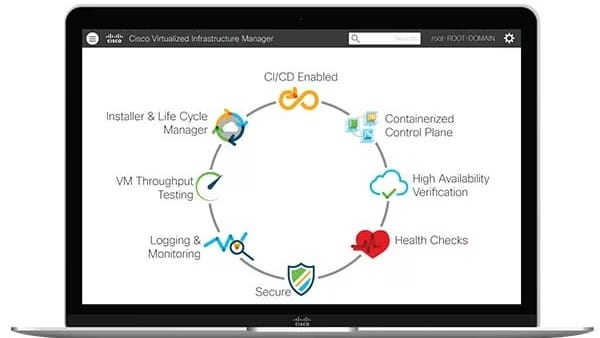
Cisco Virtualized Infrastructure Manager (CVIM) is a powerful network function virtualization (NFV) management and orchestration tool available from Cisco. CVIM distinguishes itself from other NFV solutions due to its vast feature set and ability to interface smoothly with Cisco's broader networking environment. One of Cisco CVIM's primary strengths is its complete management and orchestration capabilities. It helps enterprises to deploy, monitor, and manage virtualized network functions (VNFs) across their network infrastructure effectively. CVIM offers a single administration interface through which administrators may simply configure and monitor VNFs, assuring constant performance and dependability.
Another notable feature is CVIM's advanced automation capabilities. It streamlines VNF provisioning and scaling by automating numerous procedures, decreasing manual intervention, and lowering the chance of errors. By automating repetitive operations, firms can achieve faster time-to-market for new services and enhance operational efficiency.
The platform also has extensive policy-based orchestration capabilities. Administrators can create and enforce policies that regulate VNF behavior and configuration, assuring consistent service delivery and adherence to set norms. Organizations can use this policy-based approach to maintain service-level agreements (SLAs) and optimize resource allocation based on business objectives.
Another feature that distinguishes CVIM is its seamless connection with the larger Cisco networking ecosystem. CVIM can be used in tandem with other Cisco products such as Cisco Application Centric Infrastructure (ACI) and Cisco Virtual Topology System (VTS) to enable end-to-end administration and control of both physical and virtual network resources. This integration enables businesses to exploit their existing Cisco infrastructure investments while extending the benefits of NFV across the network.
CVIM also supports multivendor settings, allowing for interoperability with a variety of network hardware and software components. Because of this adaptability, enterprises can use CVIM in a variety of network designs and contexts, regardless of their existing infrastructure.
3. VMware vCloud NFV
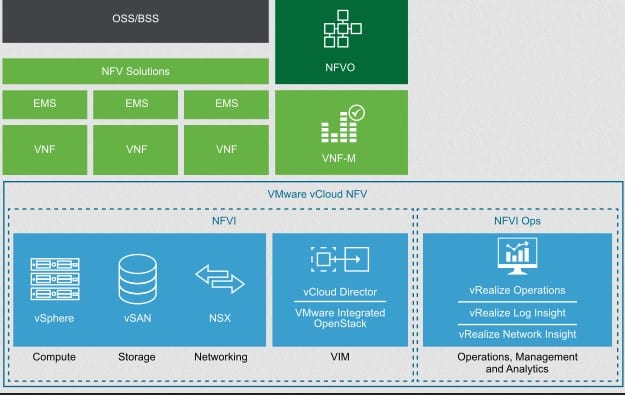
VMware vCloud NFV is a robust network function virtualization (NFV) technology designed to make virtualized network services easier to deploy and maintain. Its carrier-grade features, scalability, and significant ecosystem support set it apart from competing NFV options. One of the most important characteristics of VMware vCloud NFV is its carrier-grade dependability and performance. It is intended to suit the stringent needs of communication service providers (CSPs) and includes features such as high availability, fault tolerance, and disaster recovery. The platform assures the uninterrupted delivery of significant network services while avoiding downtime and meeting customer service level agreements (SLAs).
Another advantage of VMware vCloud NFV is its scalability. It can efficiently scale up and down to handle changing network needs and dynamic workloads. CSPs may simply add or delete virtualized network functions (VNFs) based on service requirements with vCloud NFV, ensuring flexible resource allocation and efficient infrastructure use.
VMware vCloud NFV also has a robust ecosystem of partners and solutions. It supports a diverse set of virtual network functions (VNFs) from a variety of vendors, allowing CSPs to select the best-of-breed solutions that match their requirements. Because of this flexibility, CSPs may leverage existing investments and effortlessly integrate with their preferred VNFs, resulting in a more diverse and resilient NFV ecosystem.
The platform includes advanced administration and orchestration features. It enables administrators to easily install, monitor, and scale network services by providing centralized management and automation of VNF lifecycles. CSPs can use vCloud NFV to streamline operations, decrease manual configuration requirements, and increase agility in offering new services.
Integration with VMware's broader virtualization and cloud management offering is another noteworthy feature. To provide a complete end-to-end solution, vCloud NFV leverages VMware's virtualization capabilities, including VMware vSphere and VMware NSX. This integration enables the virtualized network infrastructure and the underlying computation and storage resources to communicate in real time.
4. Nokia Virtualized Service Router

The Nokia Virtualized Service Router (VSR) is a sophisticated routing software-based network function virtualization (NFV) solution. VSR distinguishes itself from other NFV systems due to its carrier-grade performance, scalability, and wide feature set. It is designed to revolutionize networks by virtualizing edge and core routing functions.
One of Nokia VSR's distinguishing features is its carrier-grade performance. It offers high-performance routing capabilities that meet service providers' strict criteria. VSR provides advanced routing protocols such as Border Gateway Protocol (BGP) and Intermediate System-to-Intermediate System (IS-IS) to provide efficient and dependable network routing. As a result, service providers may provide high-quality network services with low latency and excellent performance.
Another advantage of Nokia VSR is its scalability. It may dynamically scale up or down to meet rising or falling network demands. Flexibility and effective resource usage are ensured by VSR's ability to efficiently manage and distribute routing functions across the virtualized infrastructure. Service providers can quickly add and delete virtualized service instances based on their network requirements, ensuring service scalability and agility.
Nokia VSR additionally distinguishes itself with its extensive feature set. It provides extensive routing capabilities like traffic engineering, QoS management, multicast support, and security features such as virtual private networks (VPNs) and firewalling. These capabilities allow service providers to implement complex network services and meet a wide range of consumer requirements while ensuring security and performance.
Furthermore, Nokia VSR integrates seamlessly with existing network infrastructures. It enables service providers to mix virtualized and physical routing tasks, allowing for a smooth transition to an NFV architecture while maintaining current operations. Interoperability with traditional network elements is a key characteristic since it allows service providers to leverage their existing investments while shifting to a virtualized environment.
5. Juniper Networks Contrail Networking
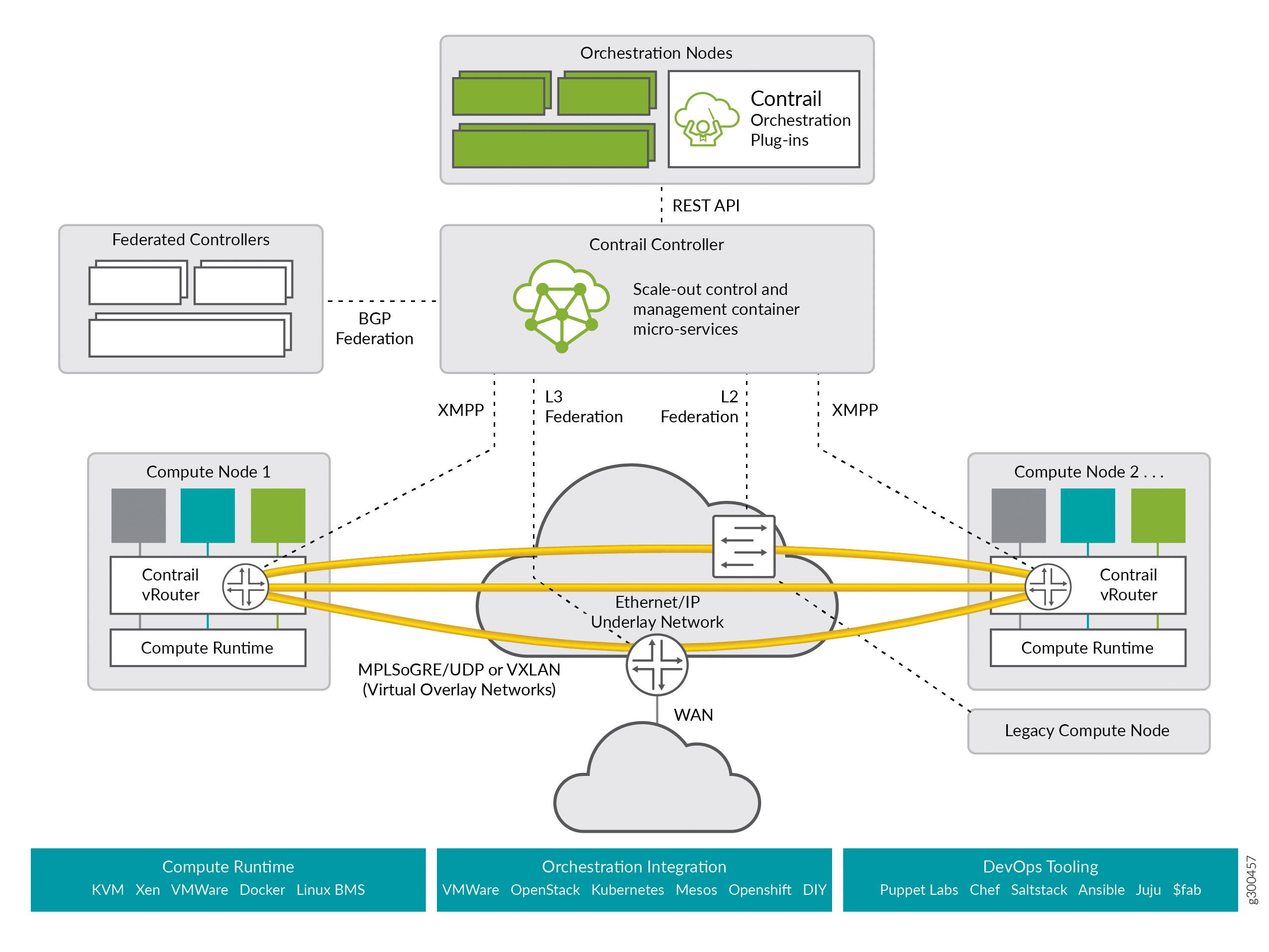
Contrail Networking from Juniper Networks is a dependable network function virtualization (NFV) solution that provides a full set of functionality for establishing and maintaining virtualized networks. Its open architecture, scalability, and superior networking features set it apart from competing NFV options.
The open architecture of Juniper Contrail Networking is a fundamental feature. It makes use of open standards and protocols like OpenStack and OpenFlow to provide interoperability and smooth interaction with existing network infrastructures. Contrail Networking also supports multivendor settings, allowing businesses to construct virtualized networks regardless of their underlying hardware or software.
Another advantage of Juniper Contrail Networking is its scalability. It offers a highly scalable and distributed architecture capable of handling large-scale deployments as well as dynamic workloads. Contrail Networking makes use of a mix of virtual and physical network parts to provide optimal resource usage and performance. Because of its scalable nature, enterprises can easily expand their virtualized networks to meet increasing demand.
Contrail Networking provides powerful networking features that enable businesses to develop agile, customizable networks. It enables the establishment of virtual network overlays with isolated environments by providing network virtualization and segmentation. By conceptually separating distinct programs or user groups, this capability improves security and simplifies network management.
Contrail Insights, a strong analytics engine, is also included in the platform. It captures and analyzes network telemetry data, giving managers with useful information about network performance, traffic patterns, and security concerns. This data-driven strategy assists enterprises in optimizing their network architecture, troubleshooting difficulties, and making educated network management decisions.
Contrail Networking distinguishes itself by offering a broad spectrum of networking services. It provides virtualized versions of Juniper Networks' industry-leading routing, switching, and security capabilities. These services, which include virtual firewalls, load balancers, and VPN gateways, offer enterprises a diverse set of networking capabilities to support a variety of use cases and deployment situations.
6. SolarWinds VMAN
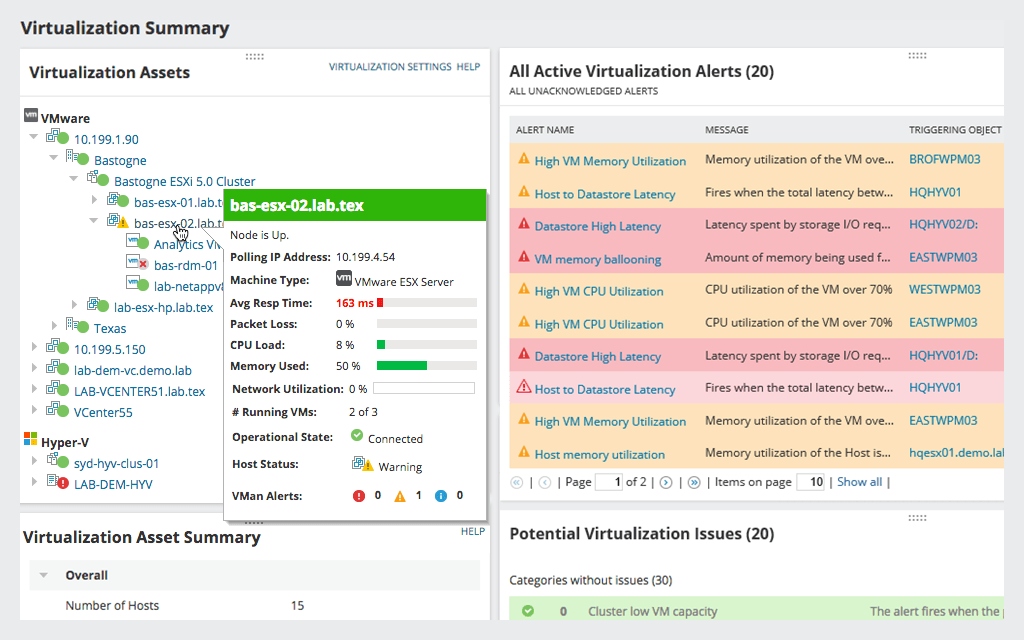
SolarWinds VMAN (Virtualization Manager) is a feature-rich network function virtualization (NFV) solution that provides complete monitoring and management of virtualized environments. VMAN stands out as a top choice for enterprises looking for efficient virtualization management tools due to its comprehensive feature set and user interface.
SolarWinds VMAN's real-time monitoring capabilities are one of its most notable features. It gives enterprises precise insights into the functioning of their virtual infrastructure, allowing them to anticipate and address possible issues ahead of time. VMAN tracks important performance parameters like CPU and memory use, disk I/O, network traffic, and virtual machine health, allowing administrators to optimize resource allocation and assure smooth operation.
Another critical part of virtualization management is capacity planning, and SolarWinds VMAN excels in this area. The system includes complete capacity planning tools that assist firms in forecasting resource needs, identifying bottlenecks, and optimizing resource utilization. VMAN analyzes historical data, forecasts trends, and creates “what-if” scenarios, allowing administrators to make informed decisions about infrastructure growth, resource allocation, and workload balancing.
VMAN's resource optimization capabilities set it apart in the NFV market. It allows enterprises to discover and reclaim wasted resources, prevent virtual machine sprawl, and assure optimal virtual infrastructure use. Administrators can utilize VMAN to discover over-provisioned virtual machines, reclaim unused storage space, and right-size their virtual environment for cost savings and increased productivity.
The user-friendly interface of SolarWinds VMAN is intended to make virtualization management jobs easier. The system enables centralized management and a unified dashboard with a comprehensive picture of the virtual environment. Administrators may quickly get the information they need for successful decision-making by navigating through performance metrics, alerts, and reports.
SolarWinds VMAN's integration with other SolarWinds products, such as Network Performance Monitor (NPM) and Server & Application Monitor (SAM), is one of its significant differentiators. This connection enables businesses to have end-to-end visibility throughout their entire IT infrastructure, from the network layer to the virtualization layer and down to the application layer. The seamless integration of these technologies creates a full monitoring and troubleshooting ecosystem, allowing administrators to immediately identify the source of problems and assure optimal performance.
In terms of pricing, SolarWinds VMAN is scaled based on the number of licenses you require and offers both a perpetual and subscription-based price. The subscription option starts at around $1917, while the perpetual license starts at $3654, meaning the perpetual license is better valued if you plan to use the product for more than two subscription periods. The solution also offers a free 30-day trial for you to rigorously test the product for virtualizing your existing platform.
7. HPE NFV
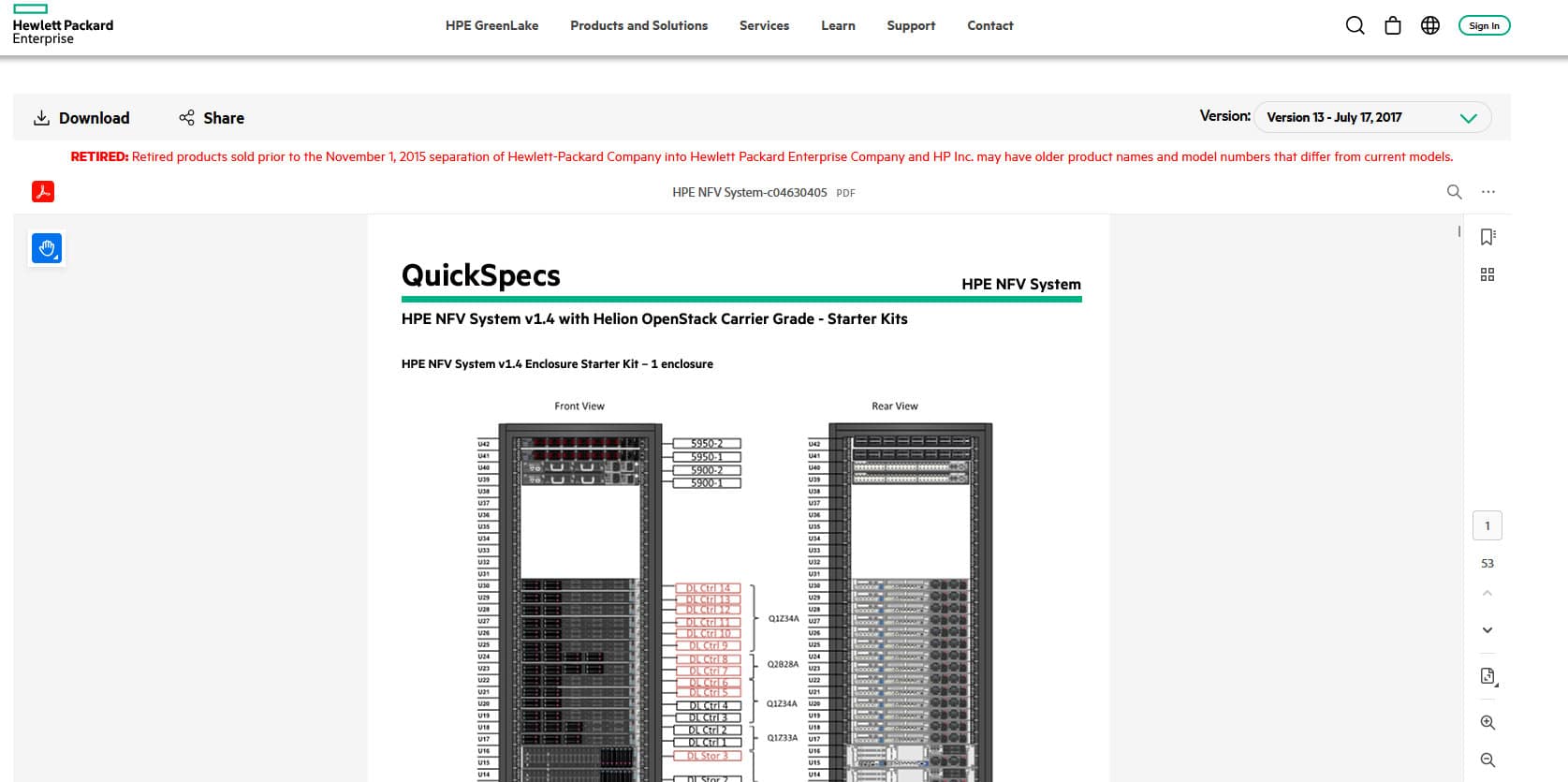
Hewlett Packard Enterprise's (HPE) HPE NFV System is a comprehensive NFV solution. It offers a pre-integrated and verified infrastructure platform developed specifically for the deployment and management of virtualized network functions (VNFs). Because of its simplicity, versatility, and end-to-end support, the HPE NFV System distinguishes itself from other NFV solutions.
One of the most appealing aspects of the HPE NFV System is its ease of deployment and maintenance. It provides a turnkey solution with all essential hardware, software, and administration tools, reducing the complexity and time required for initial setup. HPE's deep NFV knowledge and collaborations with top VNF manufacturers enable seamless integration and interoperability, enabling customers to rapidly install and scale their virtualized networks.
Another advantage of the HPE NFV System is its adaptability. It supports a diverse set of virtualized network functions (VNFs) from many vendors, allowing companies to select the best-of-breed solutions that meet their individual needs. The open architecture and standardized interfaces of the platform allow for smooth integration with existing network infrastructures, enabling compatibility and interoperability with legacy systems.
The HPE NFV System offers complete support for the whole NFV lifecycle. It features complete management and orchestration capabilities, enabling enterprises to install, monitor, and manage VNFs more efficiently. Advanced capabilities such as automated service provisioning, self-service portals, and real-time analytics are also available, allowing administrators to optimize resource allocation, troubleshoot difficulties, and ensure high-quality service delivery.
One distinguishing feature of the HPE NFV System is its emphasis on carrier-grade stability and performance. It is built to suit the severe needs of communication service providers (CSPs) and includes characteristics like high availability, resiliency, and disaster recovery. The platform assures continuous service delivery and minimizes downtime, allowing CSPs to meet rigorous service level agreements (SLAs) and provide their clients with reliable and uninterrupted services.
8. Huawei CloudEdge
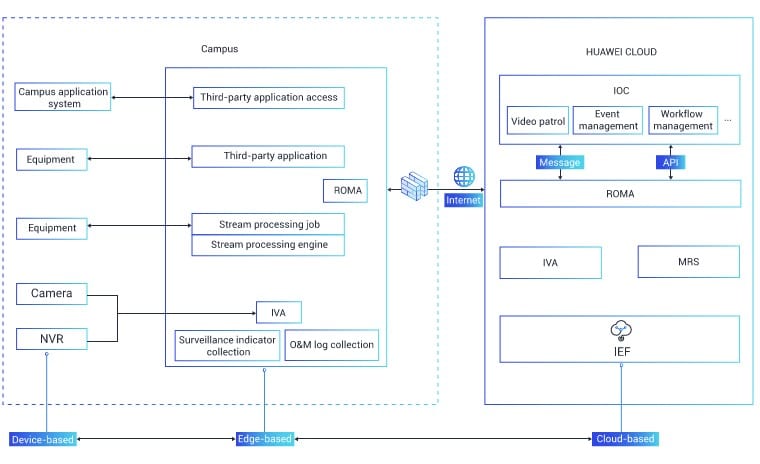
Huawei CloudEdge is Huawei Technologies' feature-rich network function virtualization (NFV) product. CloudEdge stands out from other NFV solutions due to its complete feature set, high performance, and advanced network slicing capabilities, which are designed to transform traditional network designs into agile and virtualized infrastructures.
Huawei CloudEdge's vast variety of virtualized network functions (VNFs) is one of its primary strengths. It provides a wide range of VNFs, such as virtual routers, virtual firewalls, virtual load balancers, and others. This enables enterprises to select and deploy certain network functionalities that are tailored to their business requirements. Organizations can establish flexible and customized virtual networks thanks to the availability of a broad collection of VNFs.
CloudEdge also includes high-performance networking features. To provide optimal packet processing and forwarding performance, it makes use of Huawei's superior hardware acceleration technologies, such as SmartNICs (Network Interface Cards) and DPDK (Data Plane Development Kit). This allows enterprises to achieve low-latency, high-throughput network services, which are essential for demanding applications and services.
The strong network slicing capabilities of Huawei CloudEdge are a standout feature. Organizations can use network slicing to establish many virtual networks within a single physical infrastructure, each with its own set of dedicated resources and service characteristics. This allows for more efficient resource utilization, greater security, and service isolation. Huawei CloudEdge enables fine-grained network slicing, allowing for more precise control and administration of virtual network resources.
Huawei CloudEdge provides complete administration and orchestration capabilities. It offers a centralized administration platform that enables administrators to deploy, monitor, and scale VNFs with ease. The platform incorporates automation and self-service features, which simplify operations and reduce the need for human configuration. Administrators can provision and maintain virtual networks more efficiently, ensuring agility and responsiveness to changing business needs.
